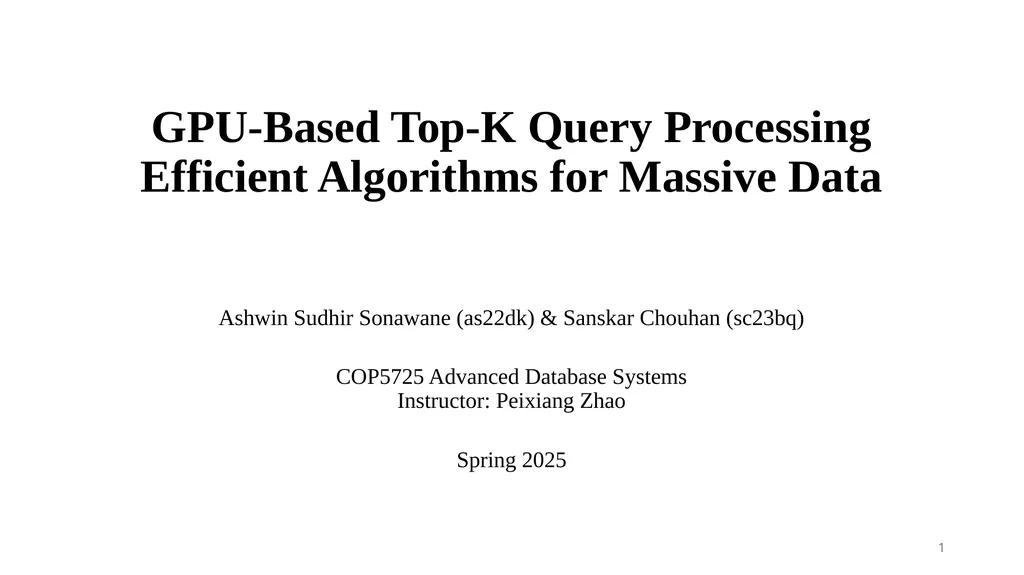
Author : alexa-scheidler | Published Date : 2025-05-12
Description: GPU-Based Top-K Query Processing Efficient Algorithms for Massive Data Ashwin Sudhir Sonawane (as22dk) Sanskar Chouhan (sc23bq) COP5725 Advanced Database Systems Instructor: Peixiang Zhao Spring 2025 1 Introduction In many applications,Download Presentation The PPT/PDF document "" is the property of its rightful owner. Permission is granted to download and print the materials on this website for personal, non-commercial use only, and to display it on your personal computer provided you do not modify the materials and that you retain all copyright notices contained in the materials. By downloading content from our website, you accept the terms of this agreement.
Here is the link to download the presentation.
"GPU-Based Top-K Query Processing Efficient"The content belongs to its owner. You may download and print it for personal use, without modification, and keep all copyright notices. By downloading, you agree to these terms.













